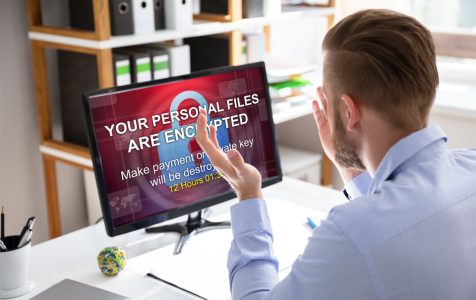Lalo is a member of the DJVU ransomware family. It is a malicious program that encrypts data before demanding ransom in exchange for the decrypting tool. Once the program infiltrates the system, it scans for documents such as images, PDF files, videos, and audio files etc. It then encrypts them such that the user will not be able to access them. The affected files end up with a second extension .lalo. For instance, if the original name of the encrypted file is filename.docx, after getting infected, it will read filename.docx.lalo. When the encryption is completed, a ransom note is dropped in all encrypted folders.
The ransom readme text content is directed to the user, stating that they shouldn’t worry, guaranteeing their data is safe and they can get it back by meeting the demands listed on the note. It then goes on to state that if the user wishes to recover their data, they must pay a ransom fee of $980. Upon completing the payment, the user will then receive the decrypt tool, as well as a unique key. To convince the user to make the payment, the note also allows users to send through a single encrypted file for it to be decrypted as proof that they are not bluffing. The fee may vary depending on how fast the victim communicates with the ransomware developers.
At times, it has been recorded that the ransomware orchestrators offer a 50% discount to users who manage to abide and complete the process within 72 hours. Upon communicating with the criminals, the victim is then asked to attach their identification document alongside a single encrypted file which will be decrypted for free. Once the user has received the decrypted file, the criminals will provide further instructions on how to make the ransom fee payment. The commonly used method of payment is Bitcoin due to its intractability as well as secrecy. Bitcoin cannot be traced back.
How to Remove the Lalo Ransomware?
The sad truth about the whole scenario is that only Lalo developers can provide victims with a key or tool to decrypt encrypted files. However, we suggest not paying a single dime as most victims have reported not receiving a tool or key from the criminals even after making the payment. This also happens after the criminals have sent the victims a decrypted file for free. Therefore, the main lesson to take from this is that you should never trust someone who illegally infiltrates your system only to ask for money in exchange for returning what is rightfully yours. Trust doesn’t exist in the internet’s dark world, only reputation speaks volume. Thus, keep your important files secure at all times and always practice safety precautions when surfing the internet.
What Does the Lalo Ransomware Do?
Lalo uses various techniques to enter your system. However, the commonly reported techniques involve spam emails and cloned software updates or downloads. The developers are the ones that send spam emails to potential victims hoping they will open it and click on attachments. If the targeted user falls for the email and clicks or opens the attachments, the ransomware will then execute. Thus, you should always be cautious of what you open in your email, especially if the sender is suspicious or unknown.
Lalo Ransomware Removal Instructions
Lalo ransomware files get deeply rooted into the computer, and on different location. Therefore, it is essential to perform a thorough system scan using a strong antivirus tool to completely remove the Lalo malware. Apart from our suggested security tool, you may use that you trust.
As mentioned above, the affected files may not be decrypted without the appropriate decrypting tool or key, which can only be provided by the Lalo ransomware developers. Therefore, the best thing you can do is make a copy of the encrypted files before going ahead with the removal of Lalo ransomware. Make sure you keep the encrypted data safe but separate from your system as you don’t want to invite the virus after cleaning your PC. Once you have made copies of the encrypted data, you can start by trying to decrypt the files using software such as Shadow Explorer and Previous Version. Here is how the process of Lalo ransomware removal goes:
Step 1: Use a strong suggested anti-malware security tool to scan your system
Start by downloading an anti-malware scanner such as Auslogics Anti-Malware. Install the program, then run a full system scan to find and get rid of the Lalo and its associated objects. The process may take long considering the number of infected directories. Once done, most trusted anti-malware tools show a list containing threats that were detected. Remove all the threats and reboot your system.
Step 2: Use Microsoft’s Malicious Software Detecting Program
Get the Malicious Software Removal Tool for free here. The tool can auto-detect your operating system and suggest the appropriate version to download. Download then double-click on the setup file to install the program. When you have completed the installation process, take note of this message; “This tool is not a replacement for an antivirus product.” It is important to understand that this software cannot be used as a sole protection tool against viruses. The program was not designed to protect the system but only to find malware within your computer and get rid of it.
Begin to scan your PC by selecting the appropriate scan. At this moment, you want to choose the Full Scan option to ensure the Lalo ransomware remnants are detected and thoroughly removed. If you have other drivers that you wish to include in the scan, select the custom scan. The full system scan will take a while; thus, you need to be patient. Upon completing the scan, the program will display all the threats detected. Delete all of them and reboot your system.
